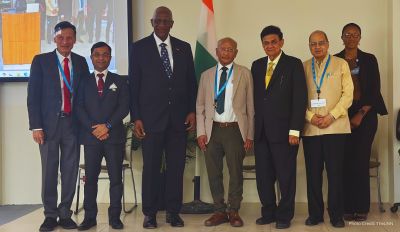A significant portion, one-third, of graduates from India’s esteemed engineering institutions, specifically the Indian Institutes of Technology (IITs), choose to move abroad. A substantial 65% of these highly-skilled individuals make up the migrants bound for the United States, as revealed in a working paper (pdf) by the National Bureau of Economic Research (NBER).
A striking statistic shows that 90% of the top performers in the annual joint entrance examination for IITs and other renowned engineering colleges have migrated. Furthermore, 36% of the top 1,000 scorers have followed suit, according to the paper released this month.
Many IIT graduates have become leading executives and CEOs in the US. The majority of these immigrants initially move to the US as students and later join the workforce. The NBER paper discovered that “83% of such immigrants pursue a Master’s degree or a doctorate.”
The report highlights the role of elite universities in shaping migration outcomes, stating, “…through a combination of signaling and network effects, elite universities in source countries play a key role in shaping migration outcomes, both in terms of the overall propensity and the particular migration destination.”
There are 23 IITs spread across India, with acceptance rates at many of these prestigious institutions being lower than those of Ivy League colleges. This is especially true for the most sought-after IITs at Kharagpur, Mumbai, Kanpur, Chennai, and Delhi. In 2023 alone, a staggering 189,744 candidates registered for the JEE, competing for a mere 16,598 seats.
Highly skilled Indians are in high demand across global economies
The NBER report highlights the US graduate program as a crucial migration pathway to attract the “best and brightest.”
In a similar vein, the UK’s High Potential Individual visa route allows graduates from the top 50 non-UK universities, including the IITs, to live and work in the country for a minimum of two years. For those with doctoral qualifications, the work visa extends to at least three years.
The report also mentions that recent IIT graduates seeking to move abroad benefit from a network of accomplished alumni and faculty members already settled overseas. Some of these connections even grant access to specific programs where they hold sway over admissions or hiring decisions.
The intriguing example of Banaras Hindu University (BHU) is worth noting
In 2012, this century-old institution, also India’s first central university, was granted IIT status. Interestingly, this elevation took place without any alterations to the staff, curriculum, or admission system at the Varanasi-based institute in Uttar Pradesh.
The NBER report examined 1,956 BHU students who graduated with BTech, BPharm, MTech, or integrated dual degrees between 2005 and 2015. The study found a remarkable 540% increase in migration probability among graduates following the IIT status designation.
The report observed that “…the quality of education/human capital acquired by the students in the cohorts before and after the change remained constant, while only the name of the university on the degree received differed.”











